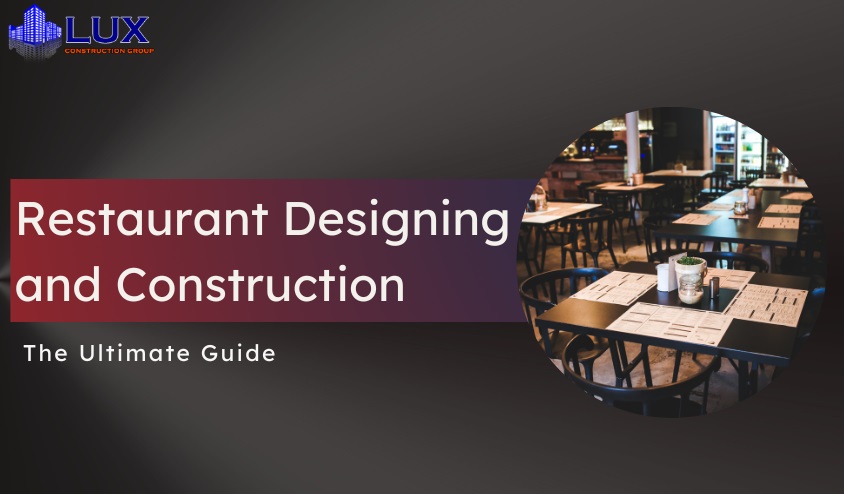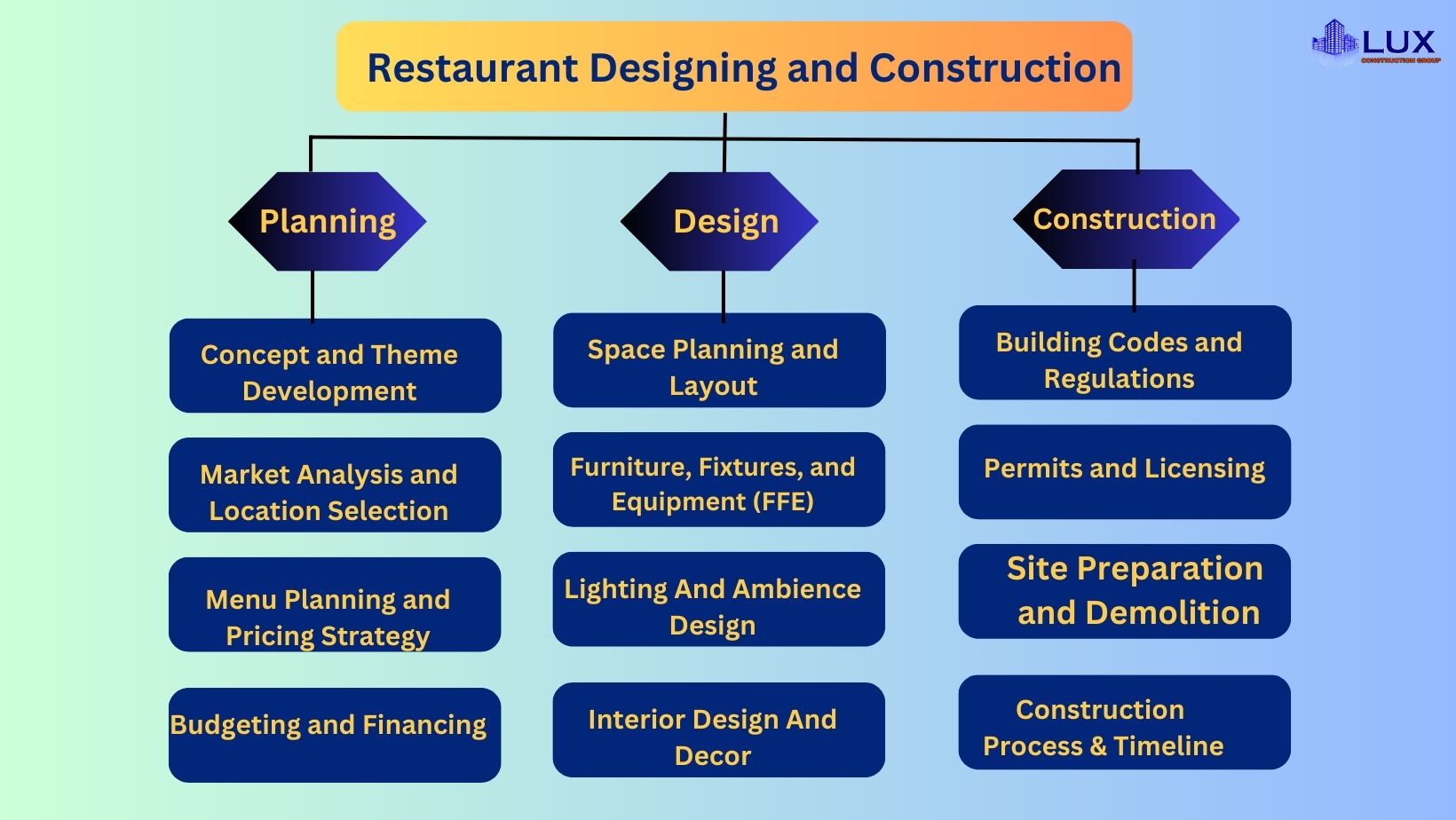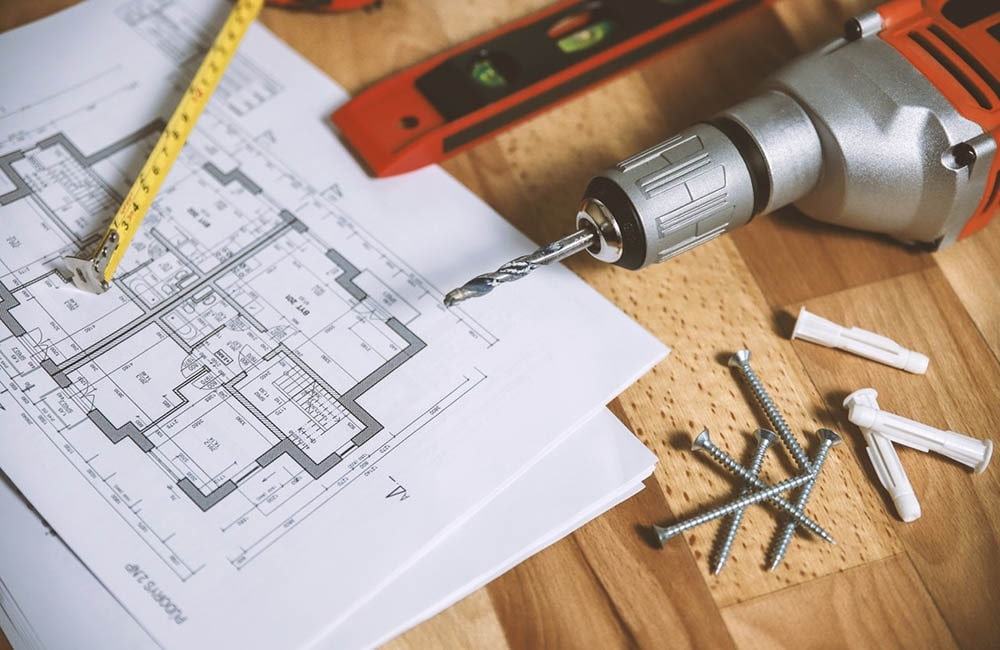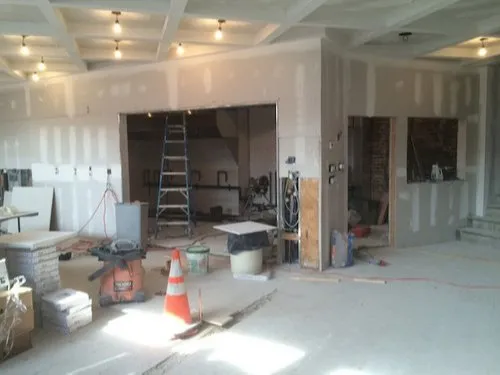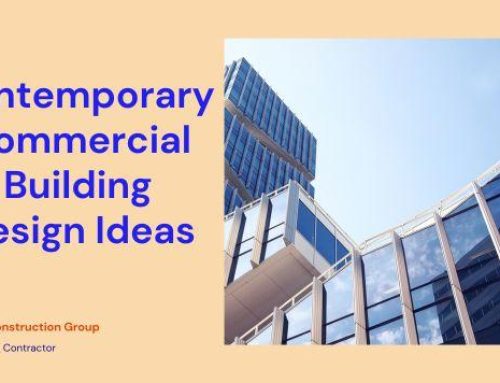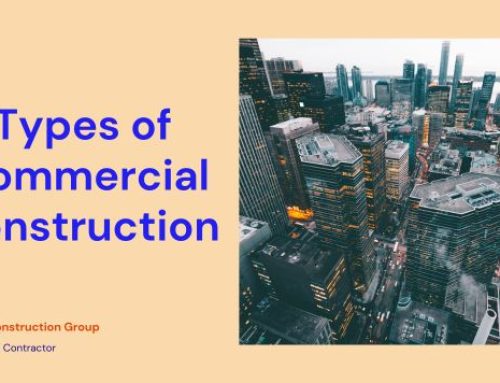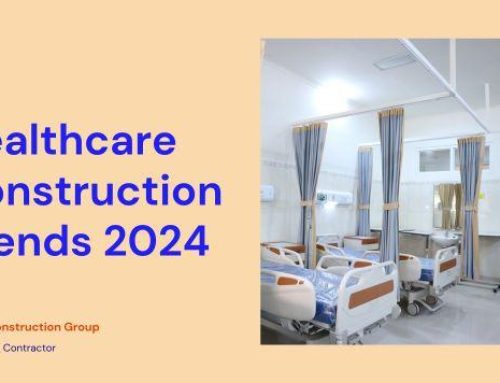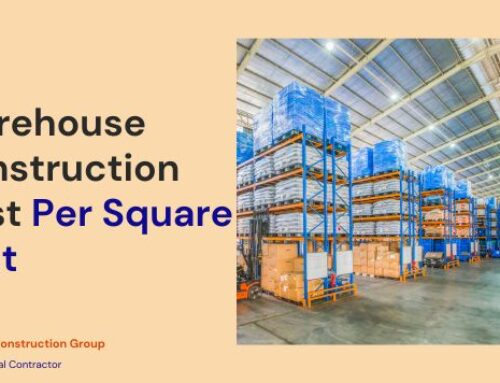Creating a memorable dining experience requires creativity, innovation, and attention to detail. From the sleek and modern to the cozy and rustic, restaurant design has the power to transport us to new worlds, tantalize our senses, and awaken our taste buds.
Are you planning to start your own restaurant or renovate an existing one? Do you feel overwhelmed with the planning, design, and construction process? Are you unsure of where to start and what factors to consider?
But designing and constructing a restaurant is no small feat. It requires careful planning, expert knowledge, and attention to detail at every stage of the process. From conceptualizing the restaurant’s unique style and menu to ensuring its functionality and compliance with local regulations, there are numerous aspects to consider. Additionally, we had to continuously monitor commercial construction trends to stay ahead of competitors and attract customers.
In this article, we will explore the ins and outs of restaurant planning, design, and construction. We will discuss the crucial steps involved in bringing a restaurant from an idea to a fully-realized space, covering everything from developing a concept to selecting the right contractors and designers. So, let’s take a look!
Restaurant Planning, Design, and Construction
Effective planning, design, and construction of a restaurant can be a game-changer for any business as it creates an unforgettable experience for customers and ultimately drives repeat business, boosting revenue. The importance of such elements cannot be overstated whether you are remodeling your old restaurant or creating a new one. Let us delve into some of the key reasons why effective restaurant planning, design, and construction are crucial:
Attract Customers
An aesthetically pleasing restaurant, with a well-thought-out layout and intricate design elements, creates an ambiance that attracts customers and makes them feel welcome. A visually stunning atmosphere encourages customers to stay longer and enjoy the experience, increasing the probability of them becoming loyal patrons.
Ensure Functionality
The intricacies of restaurant planning, design, and construction should take into account the functional aspects of the area. Among these considerations is the arrangement of the kitchen, the strategic placement of equipment, and the smooth flow of foot traffic. It must be noted that a badly constructed kitchen can result in operational inefficiencies and errors that can severely compromise the quality of the cuisine and the overall satisfaction of patrons.
Meet Regulatory Requirements
It is of utmost importance for restaurants to comply with an array of regulatory standards, which encompass local zoning and building codes, health and safety protocols, as well as accessibility guidelines. When devising a plan for restaurant development, its construction, and design should incorporate these regulations to ensure full adherence.
Create a Unique Brand Identity
A restaurant’s aesthetics can facilitate the creation of a distinctive brand identity that distinguishes it from other players in the industry. An expertly-crafted design can elicit a correlation between the restaurant and its brand in the minds of patrons, rendering the establishment more remarkable and recognizable.
Maximize Revenue
Well-thought-out and strategically executed restaurant planning, design, and construction can significantly contribute to the financial success of a dining establishment. When space is utilized optimally, processes are streamlined, and the overall customer experience is enhanced, a restaurant’s revenue and profitability can surge to greater heights.
By emphasizing the importance of restaurant planning, design, and construction, restaurateurs can utilize inexpensive remodeling ideas to create a successful and sustainable business that meets the needs of their customers by providing an exceptional dining experience.
How To Plan, Design, and Construct Your Dream Restaurant
Effective planning, design, and construction can create a welcoming atmosphere, optimize the use of space, and ultimately drive revenue and profitability for the business. It involves working with a team of architects, designers, contractors, and specialists to create a memorable experience for customers while ensuring that the space meets all necessary regulations and requirements.
Let’s take a look at the following how can we plan, design, and construct the restaurant.
Restaurant Planning
Restaurant planning stands as an essential facet of launching a restaurant, and it encompasses several steps to ensure that the business is primed for prosperity. Adequate preparation allows restaurateurs to pinpoint their target audience, create a concept and theme that resonates with customers, and locate the ideal spot for their enterprise.
Here are some critical components of restaurant planning:
Concept and Theme Development
The initial step necessitates developing a concept and theme that aligns with the restaurateur’s vision and target market.
The concept ought to embrace the type of cuisine, ambiance, decoration, and service style that will differentiate the restaurant from its rivals. Crafting a distinctive and captivating concept holds a pivotal role in luring customers and establishing a devoted client base.
Market Analysis and Location Selection
Conducting thorough market research and making the right selection for the restaurant’s location is an absolute necessity for its triumph. It’s fundamental to analyze the market and fathom the local food industry, target audience, competition, and current trends.
The location, on the other hand, ought to be easily accessible, and visible, and provide ample parking space. Furthermore, it should harmonize with the restaurant’s concept and theme.
Menu Planning and Pricing Strategy
The menu is the restaurant’s essence and demands meticulous preparation to cater to the intended market’s preferences and financial plan. Devising the menu is no easy feat, and it includes scrutinizing the type of cuisine, ingredients, and food cost.
Formulating a pricing strategy necessitates weighing the cost of ingredients, workforce, rent, and competition. Setting the right prices for the menu items is crucial in accomplishing profitability.
Budgeting and Financing
When venturing into restaurant planning, considerable capital investment is needed. It is crucial to develop a well-thought-out budget and identify potential financing sources to ensure the planning process runs smoothly.
The budget should encompass all necessary expenses, such as start-up costs, operating expenses, and a contingency fund. Financing options could come from personal savings, loans, or investments from business partners or investors.
To effectively plan a restaurant, one must conceptualize a unique and captivating idea, conduct extensive market research, carefully select the right location, devise an alluring menu and pricing strategy, and finally, develop a budget and financing plan. By meticulously planning and executing each of these elements, restaurateurs can position themselves for success in the exceedingly competitive restaurant industry.
Restaurant Design
Crafting a captivating and pleasurable dining experience for patrons involves meticulous consideration of restaurant design. It encompasses a multitude of critical elements that are essential for ensuring functionality and comfort in the dining space. Factors such as:
Space Planning and Layout
The size and shape of the restaurant, the seating capacity, and the flow of traffic are pivotal in the design process. Adequate space planning is imperative to optimize the utilization of available space and augment the restaurant’s seating capacity.
Furniture, Fixtures, and Equipment (FFE)
A crucial aspect of restaurant design revolves around the selection of Furniture, Fixtures, and Equipment (FFE). This encompasses a wide range of items, including tables, chairs, booths, bar stools, and other furnishings.
The choice of FFE is pivotal in reflecting the restaurant’s brand and theme, while also prioritizing comfort, durability, and functionality. The right selection of FFE can create a warm and inviting ambiance, elevating the overall dining experience for patrons.
Lighting And Ambiance Design
Meticulous attention must be given to the lighting design, carefully curated to evoke the desired atmosphere, be it romantic, cozy, or vibrant. The strategic placement of lights can accentuate specific areas of the establishment, such as showcasing exquisite artwork or illuminating the elegant bar.
Moreover, the ambiance design encompasses a wide spectrum of sensory experiences, ranging from the harmonious melodies of carefully curated music to the artfully curated decor that adorns the space, all harmoniously woven together to create a seamless and unforgettable dining experience for patrons.
Interior Design And Decor
These are indispensable pillars for creating a restaurant that stands out from the crowd, exuding a distinct and alluring charm. The design must flawlessly embody the restaurant’s brand and theme, be it a sleek and modern aesthetic, a traditional and timeless vibe, or an eclectic and whimsical atmosphere.
The decor elements, including carefully selected artwork, verdant plants, and other tastefully chosen decorative items, are carefully orchestrated to infuse the space with character and personality. The interior design and decor must effortlessly foster a warm and inviting ambiance, embracing diners in a comfortable embrace that encourages them to unwind and relish their dining experience to the fullest.
Restaurant design plays a crucial role in creating an enjoyable and memorable dining experience for customers. When done effectively, restaurant design can help drive revenue and profitability for the business.
Restaurant Construction
Restaurant construction is a complex process that involves several stages, from planning and design to construction and completion.
Building Codes and Regulations
When it comes to crafting a restaurant that adheres to the rules of the trade, there are a few considerations more vital than compliance with building codes and regulations. This intricate process involves meticulous attention to detail to ensure that every aspect of the building, from its structural integrity to its accessibility and health standards, meets all the requirements set forth by fire codes, plumbing codes, electrical codes, and more.
Overlooking or neglecting these crucial regulations can have severe consequences, ranging from hefty fines and frustrating delays to the unthinkable closure of the restaurant.
Permits and Licensing
Obtaining the necessary permits and licenses is a paramount step in the restaurant construction journey. This entails acquiring permits for construction, electrical work, plumbing, and other relevant areas, and diligently navigating the labyrinth of regulations and requirements.
In addition, it is imperative to secure a food service permit and any other pertinent licenses or certifications mandated by local or state authorities. These permits and licenses serve as a hallmark of legitimacy, ensuring that the restaurant operates within the legal framework and meets the standards set by the governing bodies.
Site Preparation and Demolition
The inception of a construction project necessitates meticulous preparation and thorough site assessment. The existing structures, if deemed redundant, must be meticulously demolished to pave the way for the new development.
This undertaking may encompass clearing the land from any obstructions, leveling the site to ensure stability, and removing any hazardous materials that may pose a risk. It is imperative to adhere to stringent safety regulations and obtain appropriate permits to comply with local regulations, ensuring that the demolition process is carried out safely and efficiently.
Construction Process and Timeline
In the realm of construction, the intricacies and timeline of the process are contingent upon the magnitude and intricacy of the undertaking at hand. Generally, the course of action entails collaboration with architects and contractors to conceive and actualize the edifice, encompassing groundwork, framing, plumbing and electrical installations, HVAC systems, and an array of other components.
Throughout the construction phase, it is paramount to uphold consistent communication with the construction team and diligently oversee the advancement to guarantee adherence to the designated timeline and budgetary constraints.
What to Consider and How to Overcome Challenges?
In the realm of restaurant construction, myriad crucial factors must be taken into account to guarantee a triumphant undertaking. From embracing sustainability and eco-conscious design to prioritizing accessibility and seamless technology integration, restaurant proprietors must stay abreast of cutting-edge trends and optimal methodologies to maintain a competitive edge.
Site Selection and Preparation
Choosing the right location is crucial for the success of any restaurant. Owners must consider factors such as foot traffic, accessibility, parking, and visibility. Additionally, the site must be properly prepared and cleared before construction can begin. This may involve the demolition of existing structures, grading the land, and installing infrastructure such as utilities and drainage systems. In case, you are remodeling your old restaurant, you can follow our restaurant remodeling checklist.
Budgeting and Financing
Crafting a new restaurant from the ground up requires astute financial planning and budgeting. Owners need to meticulously account for various expenses, ranging from the cost of materials and labor to permits, licensing fees, insurance, and other miscellaneous costs. Exploring diverse financing options such as loans and partnerships can also prove instrumental in securing the necessary funds to bring the project to fruition.
Sustainability and Eco-Friendly Design
A burgeoning trend that has gained significant traction in the realm of restaurant construction is the integration of sustainability and eco-friendly design. This entails utilizing materials that are recycled or sourced locally, implementing cutting-edge energy-efficient systems, and incorporating verdant green spaces and captivating landscaping.
By incorporating sustainability into the very fabric of the restaurant’s design and construction, owners can not only reduce their environmental footprint but also enjoy long-term cost savings on utility bills and other overhead expenses.
Accessibility and ADA Compliance
It is crucial to consider accessibility and compliance with the Americans with Disabilities Act (ADA). It is imperative to ensure that the restaurant is inclusive and accommodating to all customers, irrespective of their physical abilities. This may entail installing ramps for wheelchair access, providing accessible restrooms, and incorporating other features that align with ADA guidelines to promote inclusivity.
Technology Integration and Automation
Technology plays a growing role in restaurant construction. This may involve integrating mobile ordering and payment systems to enhance convenience for customers, installing smart lighting and temperature control for efficient energy management, and automating certain processes to streamline operations and reduce labor costs. Embracing technological advancements can greatly improve the overall efficiency and sustainability of the restaurant’s operations.
COVID-19 Safety Measures
In the aftermath of the unprecedented COVID-19 pandemic, restaurant owners must be vigilant and informed about the latest safety measures to protect their patrons and staff. This may involve implementing strict social distancing protocols, installing sturdy plexiglass barriers, and enhancing ventilation systems for optimal air quality.
To overcome the challenges of restaurant construction, owners need to work closely with experienced professionals such as architects, contractors, and consultants who can provide valuable advice and support.
Being prepared to adapt and make necessary changes to the design or budget is also crucial. By meticulous planning and attention to detail, owners can successfully navigate the complexities of restaurant construction and create a thriving establishment.
Need Help? LUX Construction is Here!
Crafting a thriving restaurant requires meticulous planning, thoughtful design, and meticulous construction. It’s a complex puzzle that demands careful consideration of building codes, permits, sustainability, and safety measures.
Overcoming these challenges may seem daunting, but with the expertise of a seasoned team like LUX Construction, restaurateurs can turn their vision into a stunning reality.
LUX Construction boasts a wealth of experience and professionalism, making us the ideal partner for restaurant renovation and construction. We understand the intricacies of the industry and can navigate the complexities with ease, ensuring that every aspect of your project is executed to perfection.
Contact us to get started!

